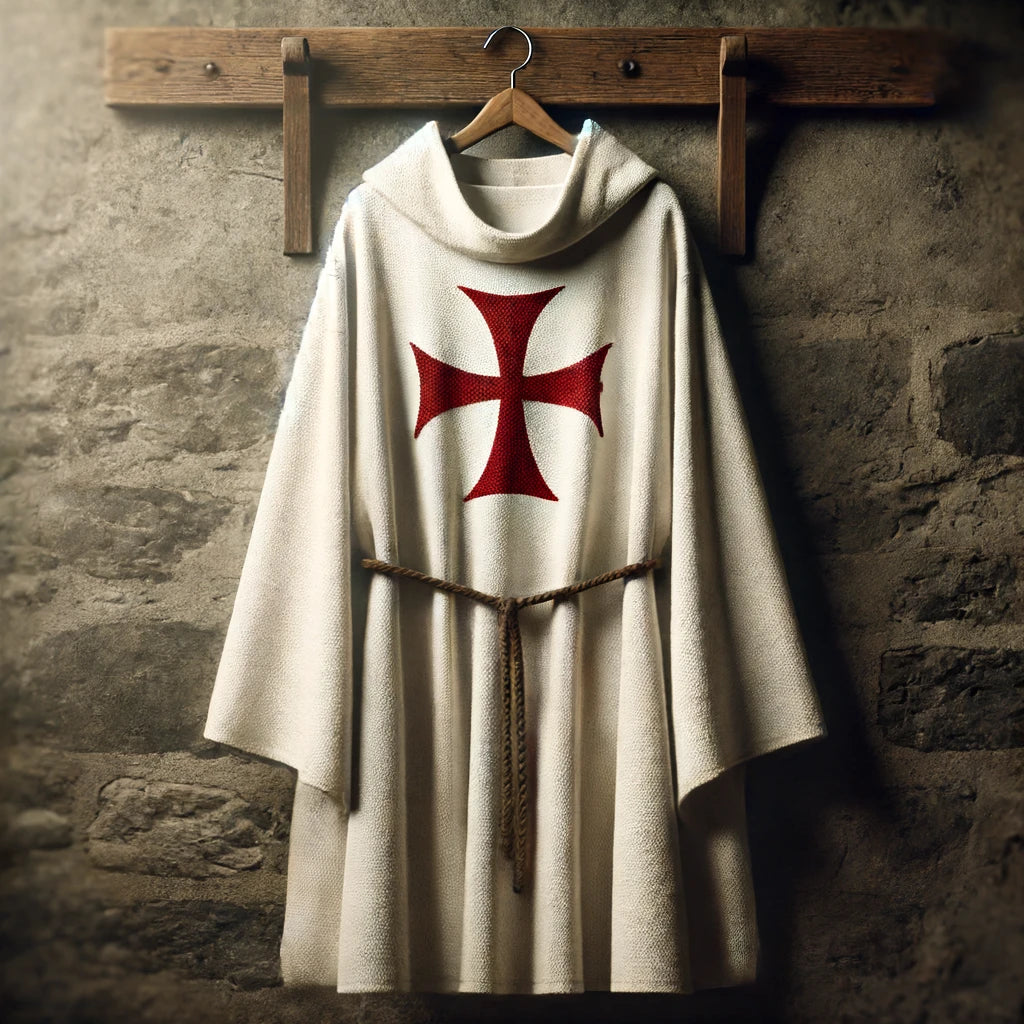The Iconic Symbolism of the Knights Templar: A Deep Dive into Their Emblems and Meanings
The Knights Templar, a medieval Christian military order, are renowned for their distinctive symbols, which continue to captivate the imagination of historians and enthusiasts alike. Their iconic emblems, particularly the red cross, are steeped in meaning and history. This article delves into the rich symbolism of the Knights Templar, uncovering the significance behind their famous symbols.
The Red Cross: A Symbol of Martyrdom and Faith
Origins of the Templar CrossThe most iconic symbol associated with the Knights Templar is the red cross, prominently displayed on their white mantles. Granted by Pope Eugenius III in 1147, the red cross symbolized the Templars' willingness to become martyrs for their faith, representing their dedication to defending Christianity.
Symbolism and MeaningThe red cross was more than just a religious emblem; it was a mark of honor and sacrifice. It signified the Templars' commitment to their cause and their readiness to lay down their lives in service to God.
The White Mantle: Purity and Chastity
The Introduction of the White MantleIn 1129, the Knights Templar adopted the white mantle as their official attire. The white color was chosen to symbolize purity and chastity, aligning with their monastic vows. This mantle became a defining feature of the Templars' identity.
Symbolic SignificanceThe white mantle represented the Templars' spiritual commitment and their dedication to living a life of chastity and devotion. It served as a constant reminder of their vows and the purity of their mission.
Own a Piece of History: Browse our authentic Templar mantles crafted with historical accuracy.
The Templar Seal: Authority and Unity
Description of the Templar SealThe Templar seal depicted two knights riding a single horse, symbolizing the order's initial poverty and the knights' brotherhood and unity. This seal was used on official documents and communications, signifying the authority of the Templar order.
Symbolic MeaningThe image of two knights on one horse illustrated the Templars' humility and their vow of poverty. It also emphasized the strong bond of brotherhood among the knights, highlighting their unity and collective strength.
The Cross Pattee: Strength and Honor
Design and UsageThe Cross Pattee, a variation of the Templar Cross, featured splayed arms that broadened towards the edges. It was used in various insignia and decorations, symbolizing the knights' strength and honor.
Symbolic InterpretationThis cross variant signified the Templars' martial prowess and their commitment to upholding the honor and values of their order. It was a symbol of their strength in battle and their dedication to their cause.

The Sword: Justice and Protection
Design and ImportanceThe sword was not just a weapon for the Knights Templar; it was a powerful symbol of justice and protection. Each knight's sword was a personal emblem of their commitment to defending the faith and upholding the values of their order.
Symbolic MeaningIn Templar iconography, the sword represented the fight against evil and the protection of the innocent. It also symbolized the knight's role as a warrior for justice and truth, reinforcing their dual identity as both monks and soldiers.
Enhance Your Collection: Discover our Templar swords crafted with historical precision.
The Shield: Defense and Faith
Design and UsageThe shield, often adorned with the red knights templar cross, was a crucial part of the Templar's battle gear. It provided physical protection in combat and served as a symbol of their defensive role in protecting Christianity.
Symbolic InterpretationThe shield symbolized the defense of the Christian faith and the Templars' role as protectors of the Holy Land. It also represented the strength and resilience of the order in the face of adversity.

The Helm: Courage and Nobility
Design and FunctionThe helmet was a vital piece of Templar armor, providing protection for the head during battle. It often featured a cross design, emphasizing the knight's religious commitment.
Symbolic SignificanceThe helmet symbolized courage and nobility, qualities that were essential for the Templars. It represented their bravery in battle and their noble mission to defend the Christian faith.

The Chalice: Devotion and Sacrifice
Religious SymbolismThe chalice, used in religious ceremonies, symbolized the Templars devotion and their willingness to sacrifice for their faith. The Templar chalice was a reminder of the Eucharist and the spiritual sustenance it provided.
Historical SignificanceIn Templar rituals, the chalice played a central role, symbolizing the blood of Christ and the knight's commitment to the Christian sacrament. It reinforced the spiritual aspect of their mission.

The iconic symbolism of the Knights Templar is a rich tapestry of religious and martial elements that defined their identity and mission. From the red cross and white mantle to the sword, shield, and chalice, each symbol carried deep meanings and reinforced their role as warrior monks dedicated to defending Christianity.
By understanding the significance of these symbols, we gain a deeper appreciation for the Templars' historical legacy and the values they upheld. These symbols continue to inspire and fascinate people around the world, reflecting the enduring impact of the Knights Templar.
Dive deeper into the rich history and symbolism of the Knights Templar. Subscribe to our newsletter for exclusive insights and updates. Visit our Store to explore Templar-inspired products and bring a piece of history into your life.



















